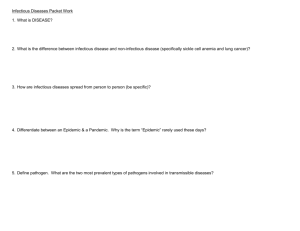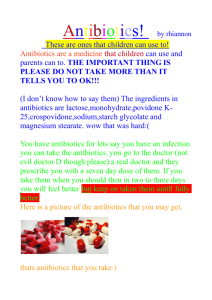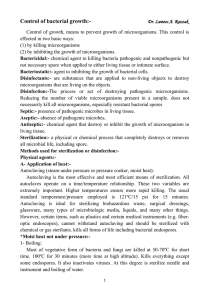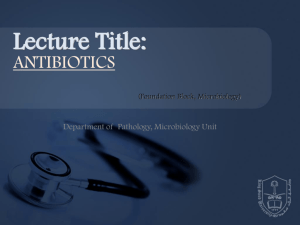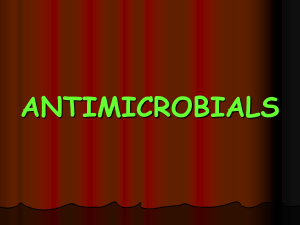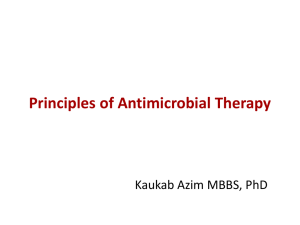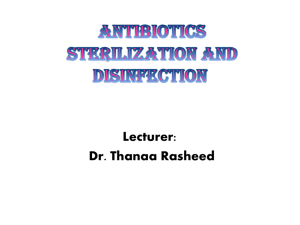Antibiotics - Nursing Pharmacology FrontPage
advertisement
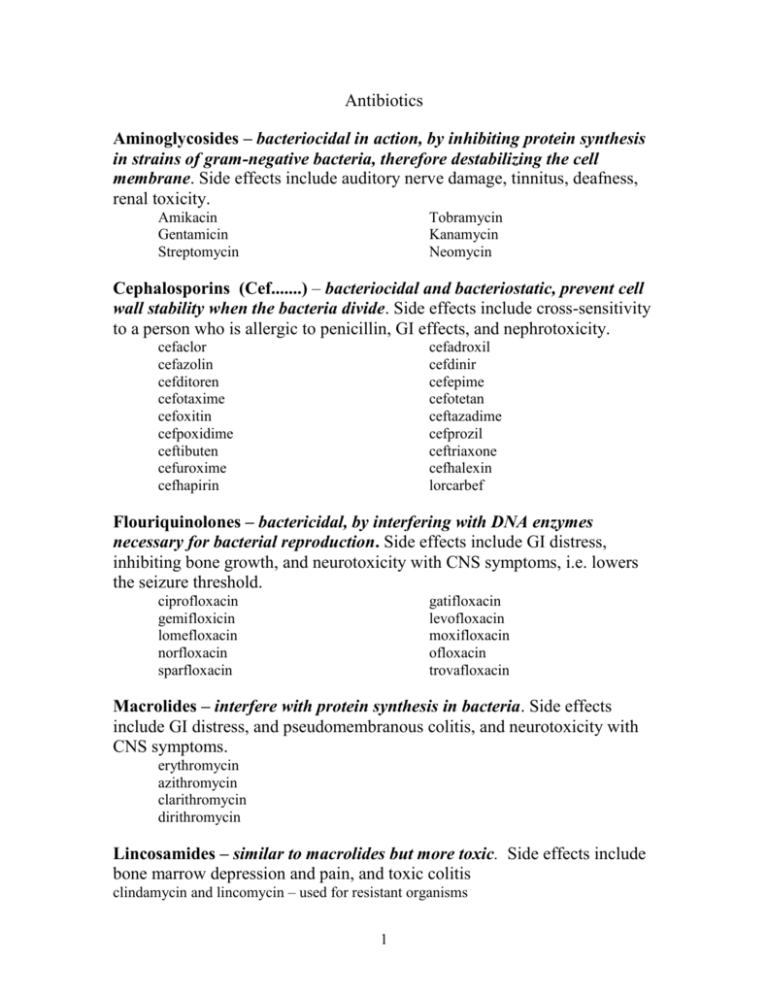
Antibiotics Aminoglycosides – bacteriocidal in action, by inhibiting protein synthesis in strains of gram-negative bacteria, therefore destabilizing the cell membrane. Side effects include auditory nerve damage, tinnitus, deafness, renal toxicity. Amikacin Gentamicin Streptomycin Tobramycin Kanamycin Neomycin Cephalosporins (Cef.......) – bacteriocidal and bacteriostatic, prevent cell wall stability when the bacteria divide. Side effects include cross-sensitivity to a person who is allergic to penicillin, GI effects, and nephrotoxicity. cefaclor cefazolin cefditoren cefotaxime cefoxitin cefpoxidime ceftibuten cefuroxime cefhapirin cefadroxil cefdinir cefepime cefotetan ceftazadime cefprozil ceftriaxone cefhalexin lorcarbef Flouriquinolones – bactericidal, by interfering with DNA enzymes necessary for bacterial reproduction. Side effects include GI distress, inhibiting bone growth, and neurotoxicity with CNS symptoms, i.e. lowers the seizure threshold. ciprofloxacin gemifloxicin lomefloxacin norfloxacin sparfloxacin gatifloxacin levofloxacin moxifloxacin ofloxacin trovafloxacin Macrolides – interfere with protein synthesis in bacteria. Side effects include GI distress, and pseudomembranous colitis, and neurotoxicity with CNS symptoms. erythromycin azithromycin clarithromycin dirithromycin Lincosamides – similar to macrolides but more toxic. Side effects include bone marrow depression and pain, and toxic colitis clindamycin and lincomycin – used for resistant organisms 1 Monobactam Antibiotics – disrupts the cell wall and causes cell death by leakage. Side effects include GI distress, hepatic enzyme elevation, allergic response to someone who is anaphylactic to penicillins. aztreonam Penicillins (....cin’s) – Bactericidal by interfering with bacterial cell wall reproduction. Side effects include GI distress, sore mouth, furry tongue, rash, anaphylaxis. amoxicillin carbenicillin PCN-G – potassium PCN – V pipercillin ampicillin PCN –G –benthazine PCN –G – procaine ticarcillin Penicillinase Resistant Antibiotics –bactericidal by same mechanisms but better fit for drug resistant organisms that produce penicillinase. dicloxicillin nafcillin oxacillin Sulfonamides – bacteriostatic byblocking PABA, thereby inhibiting folic acid synthesis (which is necessary for replication of purines and pyrimidines), precursors of RNA and DNA; becoming less used as bacteria are becoming more resistant. Side effects are GI, rash, birth defects. cotrimoxazole sulfazadine sulfasalazine sulfasoxazole sulfadiazine Tetracyclines (....cline’s) - = “four rings”, bacteriocidal by inhibiting protein synthesis. Side effects; disturbed bone and tooth growth, enamel formation, GI effects, and hepatic toxicity. Wide-spectrum antibiotics demeclocycline minocycline tetracycline doxycycline oxytetracycline Anti-mycobacterial antibiotics – bactericidal by DNA inhibition Anti-Tuberculosis drugs – need to be used for at least six months to 2 years to be effective. This is because mycobacterium take so long to grow and replicate. capreomycin cycloserine ethambutol ethionamide isoniazid (INH) pyrazinamide rifampin - + INH = liver toxicity rifapentine streptomycin – common anaphylaxis after the first dose has sensitized the pt. 2 Anti-mycobacterial antibiotics – bactericidal and bacteriostatic Leprostatic Drugs – antibiotics used to treat leprosy and other skin diseases dapsone – used for PCP pneumonia, leprosy, skin infections, and recluse bites. clofazimine – used for dapsone - resistant leprosy 3



